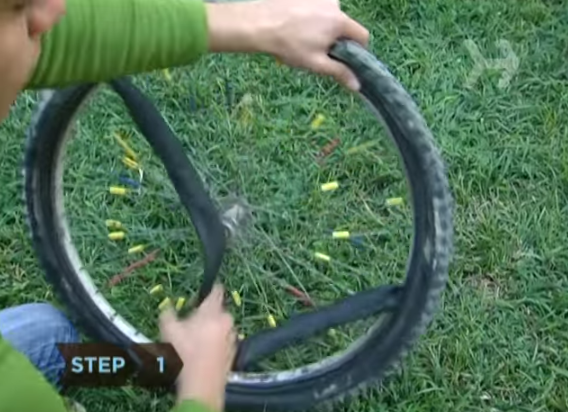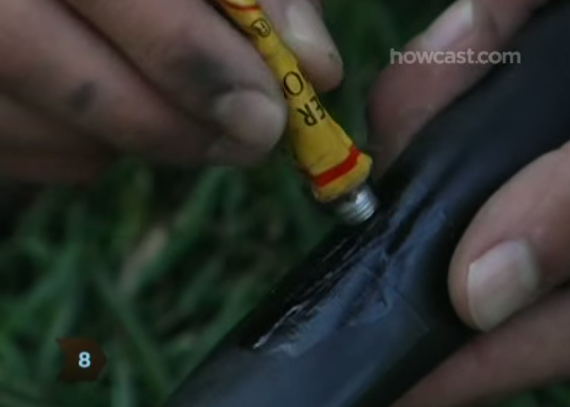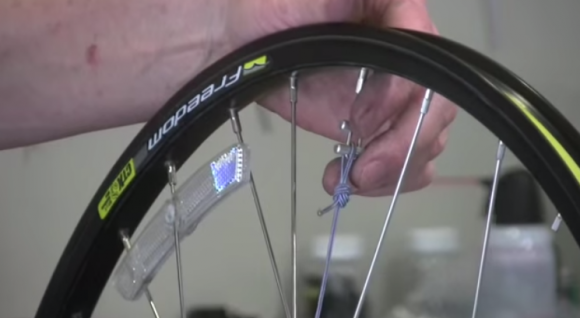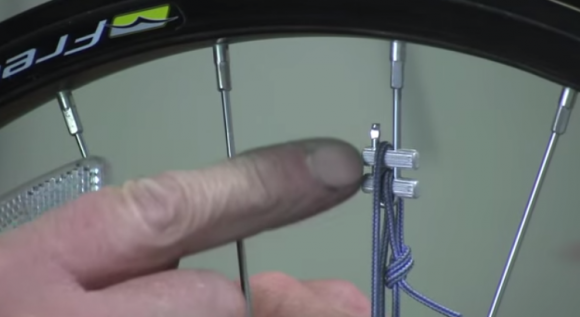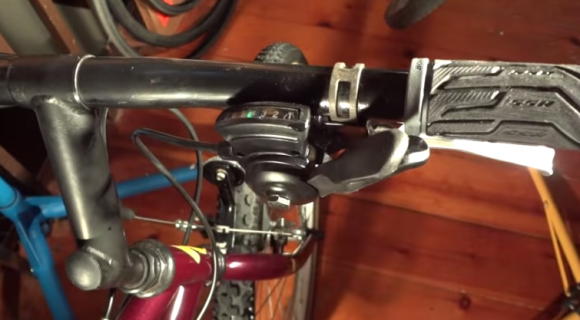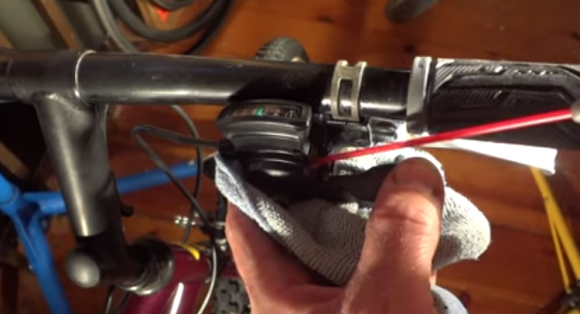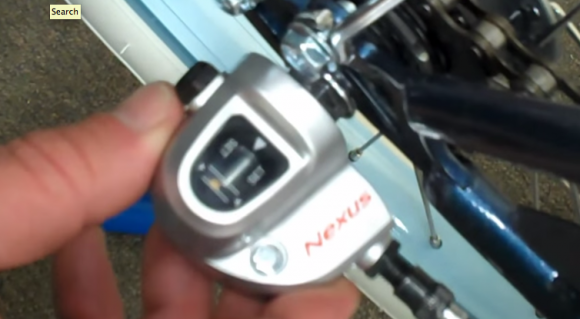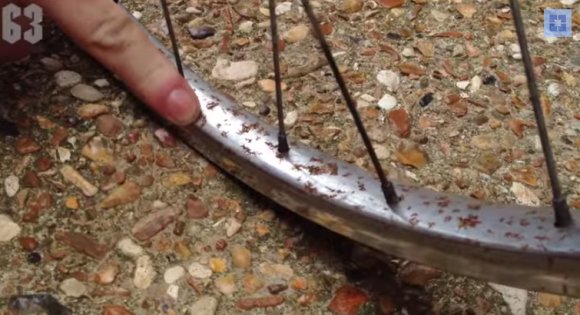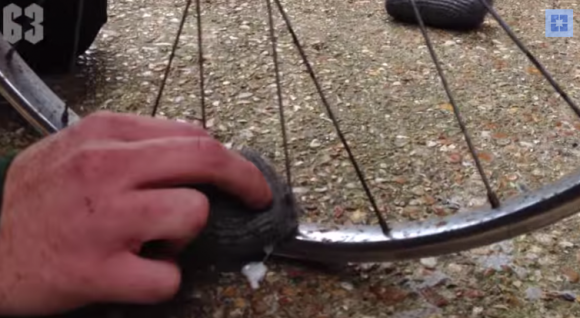The Bike Tube Hint: Don’t rush off and buy a professional bike box or bike bag. First head over to your local bike shop and ask if they have any leftover boxes from when bikes were shipped to their store. These work just as well, and they’re free!
-------
In this video, I’m going to show you how to pack a bike into a bike box.
There are some essential tools you’ll need for this job: a pump, some allen keys, a pedal spanner, padding, dropout protectors, and tape.
Pedals: The way I think about removing pedals is to go against the way that you turn the cranks. The easiest way to achieve this is to hold the back brake to prevent the bike from moving. Then, gently put your foot on the arm of the spanner wrench and apply pressure. If you’re using a pedal spanner be careful to avoid the chainrings on the drive side.
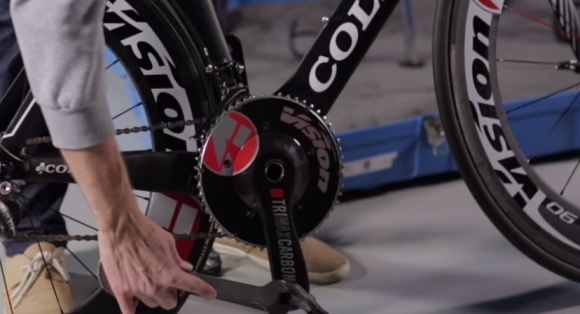
Watch Out for Chainring When Removing Pedals
Remove stem and handlebars: Start by removing the top cap from the stem. Loosen the bolts on either side then gently put the stem upwards from the fork’s steerer tube so that the handlebars are hanging by the cables. Remember to put the cap back on once you have done this so you don’t lose it. Same with the bolts from the stem.
Remove the seat: Before you remove the saddle mark the position with a piece of tape. Line the tape with the edge of the frame, loosen the bolts in the saddle clamp, and remove the saddle. Remember to replace the bolts in the saddle clamp to not lose them.
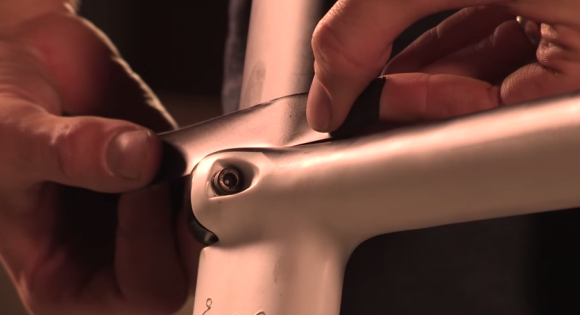
Mark Seat Height with Tape
Remove the wheels: This is easiest when the chain is on the smallest gear on the rear cassette, and the small ring on the front crankset. Open the brake calipers and the quick release on the wheel you are removing. Do the same with the front wheel of the bike. Before you put your wheels into the box, remember to deflate them.
Remove the rear derailleur: some people like to move their rear derailleur for safety reasons, and with some bike boxes you have to. Do this with an allen key turning anti-clockwise.
Padding is important if you don’t have a hard case. Remember to strap the frame into position once it is in the box so it doesn’t move about in transit.
Dos and Don’ts: Never put gas canisters into the bike box or containers of pressurized air. If you have electronic gears, you will also need to take the battery pack out of them.
